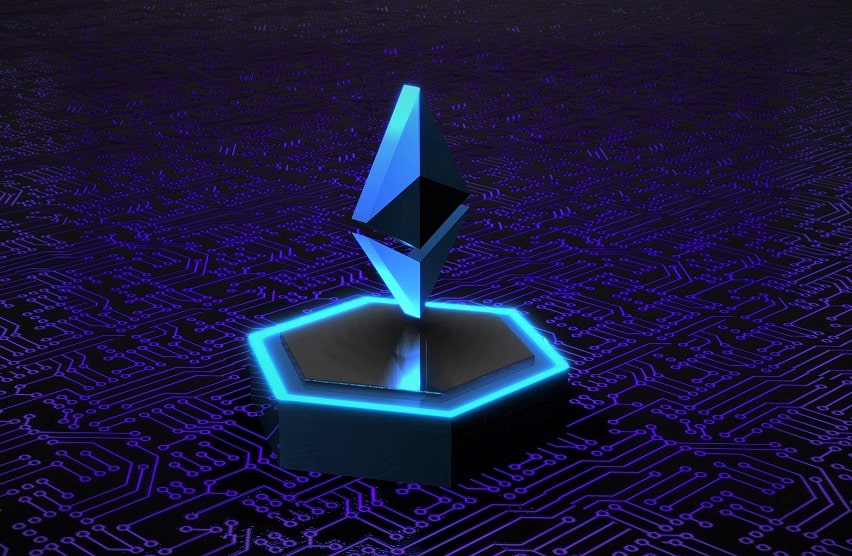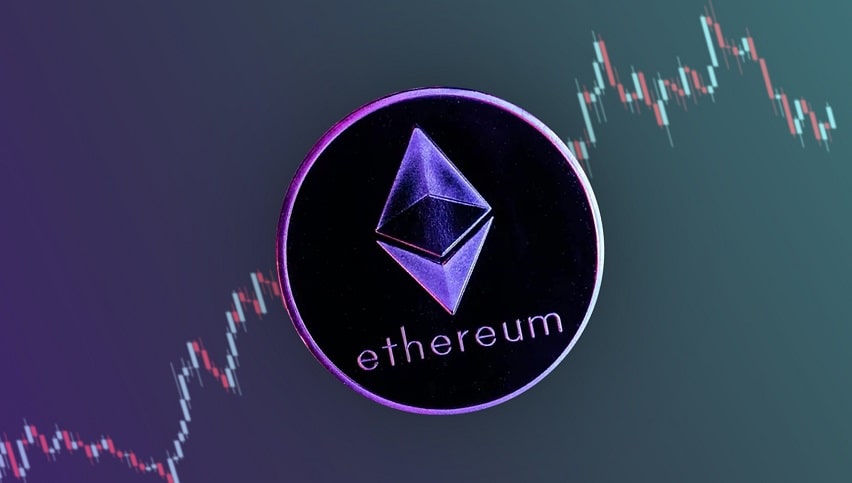If you want to find out how EOS vs. Ethereum compare as investments, you’ve probably already done some research on both platforms and noticed their similarities.
Ethereum and EOS are decentralized networks for executing smart contracts, and both are among the most popular projects in blockchain technology. But despite these similarities, several notable differences can make either one a better choice depending on your needs as an investor.
In this article, we’ll look closer at Ethereum vs. EOS and compare their major features to help you decide which is the better investment option for you. By the end, you’ll have the knowledge you need to make your decision confidently.
What Is Ethereum?
Ethereum is a decentralized, open-source blockchain network that enables users to build and deploy smart contracts and decentralized applications (dApps). It is the most widely used platform for launching Initial Coin Offerings (ICOs) and has been hailed as one of the main drivers of the cryptocurrency boom.
Vitalik Buterin created Ethereum in 2015 to enable developers to create their own application layers and build on top of the Ethereum blockchain. It is a Turing-complete platform, meaning it can execute almost any kind of code. The network is powered by Ether (ETH), which serves as an internal currency that allows users to pay for transactions and smart contracts running on the network.
Ethereum runs on a hybrid proof-of-stake consensus mechanism. This is a shift from their previous proof-of-work algorithm, designed to address scalability issues and make the network more secure.
The proof-of-stake consensus system allows users to bet on the validity of new blocks and earn rewards in return. This reduces energy costs significantly compared to proof-of-work systems.
Ethereum’s programming language, Solidity, is used for writing smart contracts. This language is similar to other object-oriented programming languages, making it easier for developers to learn and use.
What is EOS?
Before we dive into the differences between EOS vs ETH, it’s important to understand what EOS is.
EOS is a blockchain platform developed by Block.one, which runs on an open-source software protocol called EOSIO. It is designed to function as a decentralized operating system that supports the secure and fast execution of applications at scale.
The EOS network operates using the Delegated Proof of Stake (DPoS) consensus mechanism, which differs from Ethereum’s proof-of-stake system. DPoS allows network users to vote for “delegates” who will create blocks and validate transactions on the network. These delegates are rewarded with EOS tokens for their work.
EOSIO is designed to be more scalable and user-friendly than Ethereum. It supports faster transactions, with the network able to handle more than one million transactions per second (TPS). This is compared to the 17.51 TPS that Ethereum can currently process.
EOS uses C++ as its programming language, which offers a much faster development process than Solidity. It also has a built-in library of functions and smart contract templates that developers can use to speed up the development process even further.
It’s worth noting that EOS is not as decentralized as the Ethereum network. The top 21 delegated block producers control most of the network’s resources, which can be considered a centralization risk.
EOS vs Ethereum: Differences
Investors need to be aware of a few major differences between ETH vs. EOS before deciding which platform is the better investment.
Consensus Mechanism
Ethereum uses a hybrid proof-of-stake system, while EOS runs on the Delegated Proof of Stake (DPoS) consensus mechanism. The former allows miners to process transactions in exchange for rewards. The latter is designed to reduce the resources required for blockchain operations, allowing more transactions to be processed in a shorter period.
Transaction Fees
Ethereum charges users a fee for each transaction made on the network. This fee is typically higher than what EOS charges, making it more expensive to use Ethereum for certain applications.
The transaction fees on the EOS network are determined by a voting system, with block producers deciding on the fees charged for transactions. This makes it easier for developers and users to budget for their applications.
On the Ethereum network, the miners set the fees, making them more unpredictable and subject to changes in market conditions.
Smart Contracts
While both platforms allow developers to create and execute smart contracts, some key differences between the two should be considered. Ethereum’s smart contracts are powered by its native programming language, Solidity, while EOS uses C++.
Solidity is a simpler language, allowing for quicker development of complex smart contracts. It offers more flexibility than C++, but at the same time, it has higher security risks due to its complexity.
C++, on the other hand, is a more robust language, offering more control and stability. It’s based on established programming principles, making it less prone to errors. This makes it a better choice for developers looking to build more secure applications.
Scalability
Ethereum is often criticized for its scalability issues. For years, the network has struggled to handle high volumes of transactions, resulting in slow transaction times and expensive fees.
Even with the recent shift to proof-of-stake, Ethereum can still not process transactions as quickly as EOS.
EOS, on the other hand, was designed with scalability in mind. Its DPoS consensus mechanism allows it to process thousands of transactions per second, making it a better choice for applications that require fast and reliable transaction processing.
Security
Ethereum and EOS have robust security measures to protect users’ funds and data. Ethereum utilizes a combination of cryptography, consensus algorithms, and distributed systems to secure its smart contracts and transactions.
EOS is also highly secure, but its DPoS consensus mechanism comes with different risks than Ethereum. Unlike proof-of-work, DPoS requires users to select block producers who will validate transactions and secure the network. This leaves the platform vulnerable to manipulation by malicious actors.
Popularity
Ethereum is considered by many to be the dominant smart contract platform in the industry. Its popularity can be attributed to its wide range of applications, including decentralized finance (DeFi), non-fungible tokens (NFTs), and gaming.
EOS has also recently seen a surge in popularity, with more developers flocking to the platform, thanks to its scalability and the flexibility of its protocols. However, it might take some time for the platform to catch up with Ethereum regarding user adoption and usage.
EOS vs Ethereum: Performance
To understand EOS crypto vs Ethereum better, let’s look at the performance of each in detail:
EOS
EOS works on the delegated proof-of-stake (DPoS) consensus algorithm. This consensus mechanism rewards network participants for staking their coins and providing valid transactions.
This consensus algorithm is the most efficient regarding scalability, offering low latency and fast transaction speeds. With a block time of just one second, it can process thousands of transactions at once with almost no transaction fees.
The performance of EOS is unmatched in the cryptocurrency market and has been recognized as one of the most powerful blockchains. It also has an efficient smart contract system, allowing users to create their own applications and launch ICOs.
Currently, 1.83B EOS tokens are in circulation, with a total supply of 105 B. The daily trading volume is around $163.92 M, making it one of the market’s most actively traded digital assets.
The success of the EOS platform can be attributed to its scalability, low transaction fees, and fast transaction speed.
Ethereum
The performance of the Ethereum blockchain is significantly different from that of EOS. The network recently shifted from proof-of-work (PoW) consensus to proof-of-stake (PoS) consensus, making it more efficient in terms of scalability.
proof-of-stake consensus is a consensus mechanism in which network participants can stake their coins and vote on the validity of transactions. This allows for faster transaction speeds and lower transaction fees than PoW, making it more efficient.
Moreover, Ethereum also has an extensive smart contract system that enables users to create their own applications and launch ICOs. This system is powered by the Ethereum Virtual Machine (EVM), which is a Turing-complete virtual machine designed to execute smart contracts.
Over the past few years, Ethereum has experienced upgrades that have improved its scalability and performance. In September 2022, Ethereum 2.0 was launched. This upgrade brings a range of new features, including sharding and staking, which improve its scalability as well as its security.
Sharding is a process where the Ethereum blockchain is split into multiple separate chains, which can process transactions in parallel and thus make it more efficient. Staking enables users to stake their coins and receive rewards for helping to secure the network.
Ethereum is currently the second-largest cryptocurrency by market capitalization. By the time of writing, its market cap is over $$198.31 billion and has a daily trading volume of over $6.9 billion. This makes it an attractive investment opportunity for those looking to diversify their portfolio.
EOS VS Ethereum: What Does the Future Hold?
Now that we’ve looked at Ethereum vs EOS analysis and comparison, the question remains: what does the future hold for these two smart contract platforms?
Ethereum has been the go-to platform for smart contracts since its inception in 2015, and despite a few hiccups (most notably the DAO attack of 2016), it has remained relatively stable. It is by far the most popular platform for developing decentralized applications (dApps). Many blockchain projects, including 94% of the top 100, have been built on Ethereum.
EOS, on the other hand, is still relatively new. Its launch in 2018 brought some much-needed competition to the space. EOS’s success so far can be attributed to its focus on scalability and speed. The platform has an impressive transaction speed of a million transactions per second, making it much faster than Ethereum.
Both platforms are powerful and have their fair share of successes. Ethereum is the industry leader in adoption, while EOS has great potential due to its scalability and speed. This means that the future of these two smart contract platforms is uncertain but definately bright.
As EOS tries to outsmart Ethereum, we may see upgrades and features that make it the superior option. However, Ethereum is backed by a powerful community and has proven itself to be reliable. This means that Ethereum will likely remain the go-to platform for smart contract development as long as its developers can keep up with the changing landscape of blockchain technology.
Ethereum has made strides in increasing its scalability and transaction speeds. The launch of Ethereum 2.0 last year was a major step towards this goal. With the release of layer-2 solutions such as Plasma and zkSNARKs, Ethereum can now process much more than it previously could. Going forward, we might see 20,000 to 100,000 transactions per second from this crypto instead of the current 17. Its hybrid PoS model is still in development and could be the key to Ethereum’s scalability in the future.
On the other hand, EOS will continue to provide its users with a fast and efficient platform for building dApps. Its Delegated Proof-of-Stake (DPoS) consensus algorithm is already causing waves in the space due to its low cost and scalability. This could be the edge that EOS needs to overtake Ethereum.
However, the centralization that comes with this algorithm is a cause of concern for some crypto users. If the EOS platform becomes too centralized, it could lead to major issues down the line. Maybe this could be the Achilles heel of EOS.
The future may be uncertain, but the competition between Ethereum and EOS will surely be exciting for crypto enthusiasts. We’ll keep an eye on both platforms as they evolve and improve. We’ll be the first to report on major developments to help you make the best investment decision.
Key Takeaways
- EOS is designed to handle millions of transactions per second.
- Ethereum is currently stuck at 15 transactions per second.
- However, lack of decentralization remains one of the biggest disadvantages of EOS.
- EOS’s lack of censorship resistance, compared to competing blockchains like Ethereum, is also one disadvantage.
Final Thoughts
The question of which platform is better for investing in depends largely on your goals. Ethereum is the clear industry leader, and its widespread adoption makes it a safe bet for long-term investments. However, EOS’s scalability, transaction speed, and low fees make it an attractive option for investors looking to make quick profits.
Ultimately, the decision of which to invest in is up to you. Ethereum and EOS have their own strengths and weaknesses, so it’s important to do additional research before investing in either. Whichever platform you decide on, keep an eye on future developments to ensure you make the best possible decision for your portfolio. Remember to download Tezro app to keep your EOS and Ethereum assets safe.















